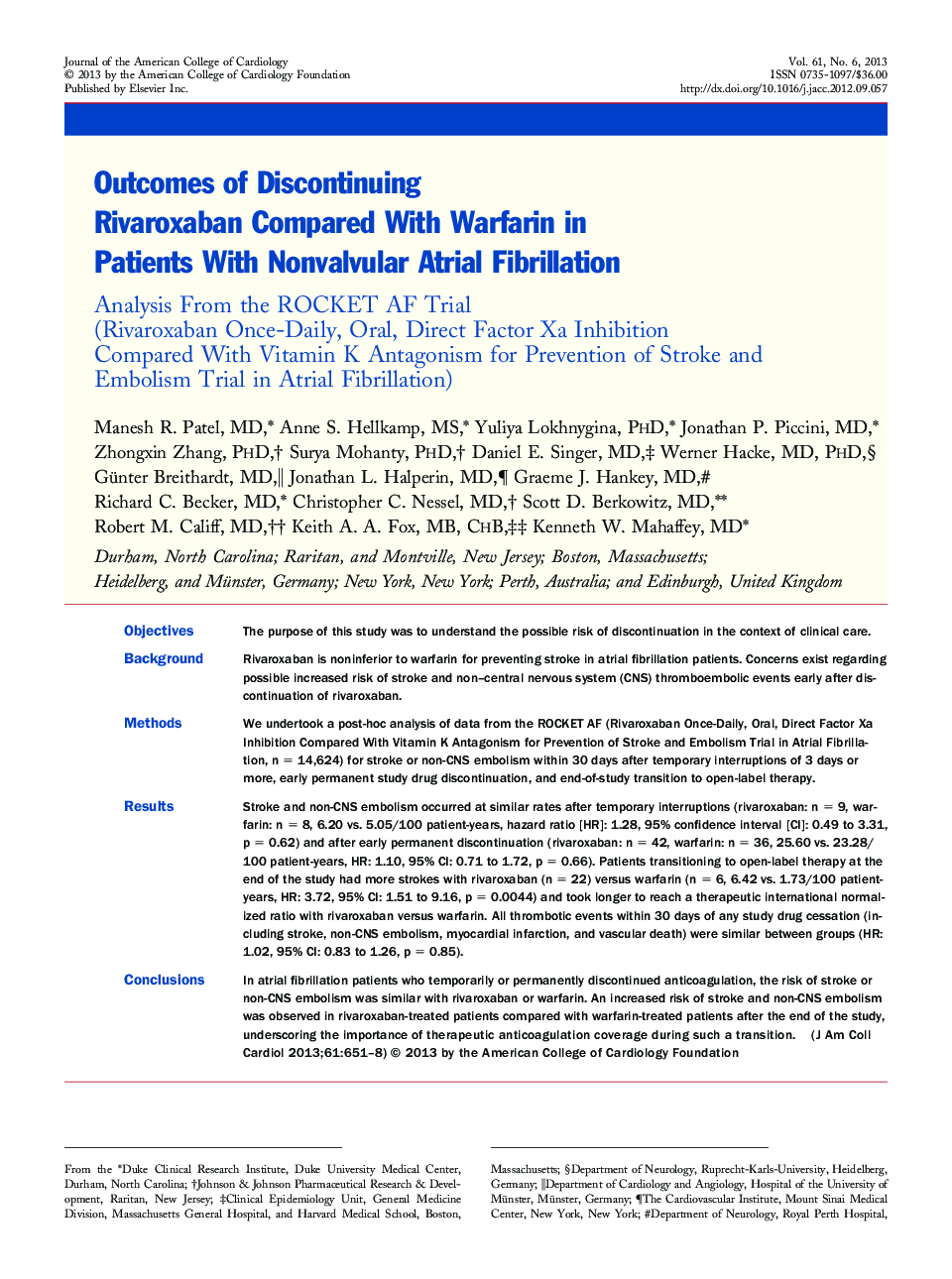| کد مقاله | کد نشریه | سال انتشار | مقاله انگلیسی | نسخه تمام متن |
|---|---|---|---|---|
| 2946228 | 1577173 | 2013 | 8 صفحه PDF | دانلود رایگان |

ObjectivesThe purpose of this study was to understand the possible risk of discontinuation in the context of clinical care.BackgroundRivaroxaban is noninferior to warfarin for preventing stroke in atrial fibrillation patients. Concerns exist regarding possible increased risk of stroke and non–central nervous system (CNS) thromboembolic events early after discontinuation of rivaroxaban.MethodsWe undertook a post-hoc analysis of data from the ROCKET AF (Rivaroxaban Once-Daily, Oral, Direct Factor Xa Inhibition Compared With Vitamin K Antagonism for Prevention of Stroke and Embolism Trial in Atrial Fibrillation, n = 14,624) for stroke or non-CNS embolism within 30 days after temporary interruptions of 3 days or more, early permanent study drug discontinuation, and end-of-study transition to open-label therapy.ResultsStroke and non-CNS embolism occurred at similar rates after temporary interruptions (rivaroxaban: n = 9, warfarin: n = 8, 6.20 vs. 5.05/100 patient-years, hazard ratio [HR]: 1.28, 95% confidence interval [CI]: 0.49 to 3.31, p = 0.62) and after early permanent discontinuation (rivaroxaban: n = 42, warfarin: n = 36, 25.60 vs. 23.28/100 patient-years, HR: 1.10, 95% CI: 0.71 to 1.72, p = 0.66). Patients transitioning to open-label therapy at the end of the study had more strokes with rivaroxaban (n = 22) versus warfarin (n = 6, 6.42 vs. 1.73/100 patient-years, HR: 3.72, 95% CI: 1.51 to 9.16, p = 0.0044) and took longer to reach a therapeutic international normalized ratio with rivaroxaban versus warfarin. All thrombotic events within 30 days of any study drug cessation (including stroke, non-CNS embolism, myocardial infarction, and vascular death) were similar between groups (HR: 1.02, 95% CI: 0.83 to 1.26, p = 0.85).ConclusionsIn atrial fibrillation patients who temporarily or permanently discontinued anticoagulation, the risk of stroke or non-CNS embolism was similar with rivaroxaban or warfarin. An increased risk of stroke and non-CNS embolism was observed in rivaroxaban-treated patients compared with warfarin-treated patients after the end of the study, underscoring the importance of therapeutic anticoagulation coverage during such a transition.
Journal: Journal of the American College of Cardiology - Volume 61, Issue 6, 12 February 2013, Pages 651–658